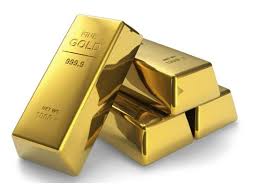The simplest, most honest answer to the question of how to tell a real diamond from a fake is “get a professional to test the diamond.” That may seem BRITISH COLUMBIA FAKE DRIVERS LICENCE, or you may have heard that there are ways that clever people with jewelers’ loupes can just take a peek and know which stones are real and which are fake, but the truth is that it is becoming harder and harder to determine a “real” diamond even for trained professionals, and it is dangerously difficult for amateurs.
That said there are some rules of thumb. If you are purchasing a diamond in a setting, check the metal stamp within the band: 10k, 14k, 18k, Pl, and similar markings indicating precious metal increase the odds of the stone mounted in the setting being real. If you have a jeweler’s loupe or a high magnification hand magnifying glass, look at the edges and girdle-band of the cut stone. Soft, rolled edges indicate a fake. So does a clear, waxy-smooth girdle where the facets meet and change direction around the “belly” of the stone.
Likewise use the loupe to look into the stone for flaws: minor flecks, inclusions, tiny fractures. These are the product of natural creation, and are hard to mimic. Unfortunately natural diamonds are also most valued when least flawed, and the minor flaws that are commonly allowed through are not easily spotted by the amateur. Weight is a common indicator. Many materials used for fakes are heavier or lighter than real diamond: in particular cubic zirconium, the most common fake diamond, is a bit heavier. If you have a precision scale and samples of real diamonds you can perform a comparison.
Do not attempt scratching glass with your diamond. Don’t attempt acid tests that might be used on metals. Don’t try smashing a diamond — it will crush as well as any other crystalline substance and better than many. You can try fogging the stone: a pure diamond shifts the heat fast enough to clear the stone before you can look at it. But that is a mere hint, no more, and is far from fail proof. Composition stones, with a base of one material and a table of diamond, will “pass” the test while proving comparatively valueless in terms of true worth.
Again, the very best way to tell a fake from a real diamond is to allow a professional to provide a serious appraisal. That means you must choose your jewelers carefully, and then ask for documentation of each gem (each is individual and documentation can go a long way to establish the nature of your own stone). A professional jeweler, working with reputable sources, will be reliable, helpful, and able to ensure you an unquestionable grade of appraisal.
With no insult intended towards chain jewelers, think very carefully before going to one for an appraisal. These businesses demonstrate both the strengths and the weaknesses of mass produced manufacture and broad distribution. They are often run very well, by honest men and women with equally honest support staff — but few in these stores are likely to have the in depth training associated with higher grades of jewelry store, or with highly qualified assessment businesses.
To find these check the yellow pages or online for advertisements offering appraisal services, and then take the time to learn the background, licensing, and experience of the assessor. A licensed jeweler, a good journeyman in a traditional trade program, a former stone dealer — these are good indicators of skill. If you are bringing in a stone, ask that it be tested in your presence (to avoid swapping by dishonest jewelers). If you are refused, turn and walk right back out. If buying a stone, ask for full documentation. And whatever you do, know that the challenge of identifying real diamond has become difficult enough to make even pros think twice and look three times.


